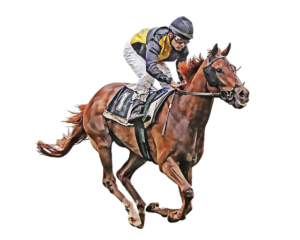 According to the ‘Racing Calendar’ or, more correctly, its predecessor, ‘An Historical List All Horses-Matches Run’, which was first published in 1727, the history of horse racing in the vicinity of Bath dates back to 1728. Initially, meetings took place at Claverton Down, to the south-east of the city centre and approximately 20 miles from the site of the modern racecourse on Lansdown Hill, where they were staged, intermittently, until 1784. At that point, meetings were transferred to Lansdown, not to the existing site, but to one between where Beckford’s Tower, an architectural folly built in 1827, now stands and the thoroughfare knowm as Weston Lane.
According to the ‘Racing Calendar’ or, more correctly, its predecessor, ‘An Historical List All Horses-Matches Run’, which was first published in 1727, the history of horse racing in the vicinity of Bath dates back to 1728. Initially, meetings took place at Claverton Down, to the south-east of the city centre and approximately 20 miles from the site of the modern racecourse on Lansdown Hill, where they were staged, intermittently, until 1784. At that point, meetings were transferred to Lansdown, not to the existing site, but to one between where Beckford’s Tower, an architectural folly built in 1827, now stands and the thoroughfare knowm as Weston Lane.
Race meetings at Lansdown, though, remained irregular and ceased altogther between 1796 and 1811, with Napolean Bonparte, who came to power in 1799, attempting to wage ecomic warfare against the British Empire and, indeed, threatening to invade Britain itself, during the Napoleonic Wars. When racing resumed, it was still anything but a regular occurence, with just one, two-day meeting staged annually in May. The year 1823 saw the inauguration of the Somersetshire Stakes, which become the feature race of the day and was, at one point, a recognised trial for the Derby. Won by Tudor Minstrel – the joint-third highest-rated racehorse in the history of Timeform – in 1947, the race was eventually discontinued in 1998, but resurrected in 2011, as part of bicentennial celebrations.
In 1831, the Bath Racecourse was moved to its current location, 780 feet above sea level on the Lansdown Plateau, which gave it the distinction of being the highest Flat racing venue in the country, which it remains to this day. Indeed, of all the racecourses in the United Kingdom, only Exeter and Hexham, at heights of 850 and 800 feet above sea level, respectively, are higher than Bath.
Following the end of World War I, during which racing ceased, the Lansdown Estate changed hands, leading to speculation about the continued success of Bath Racecourse. However, erstwhile directors of the Newbury Racecourse Company, formed in 1904, had faith in the facility and banded together to buy it, at public auction, leading to the incorporation of the Bath Racecourse Company in 1919. Thus, racing at Bath continued throughout the interwar years, but during World War II the course became an airfield for the Royal Air Force (RAF), named RAF North Stoke.
In 1953, Bath Raceourse was the scene of the infamous ‘Francasal Affair’, in which a gang of fraudsters attempted to swindle bookmakers out of £60,000, or nearly £1.4 million by modern standards, based on Consumer Price Index (CPI) inflation data. The plot essentially involved substituting a filly named Francasal with a useful French horse named Santa Amaro, cutting the telephone lines to the racecourse, to prevent communication between on-course and off-course bookmakers, and heavily backing the ‘ringer’ at odds of 10/1. Subsequent investigations by the General Post Office (GPO) and the police led to the arrest of five men, who were tried, twice, at the Old Bailey and four of whom were convicted and jailed for conspiracy to defraud.
Nowadays, Bath Racecourse is part of Arena Racing Company (ARC), who, as Northern Racing, acquired the property in 2000. In 2015/16 ARC funded a multi-million-pound redevelopment of the racecourse infrastructure and facilities, thereby creating a modern venue, which, nonetheless reflects the history and heritage of the site. The principal race – and, indeed, the only Pattern race of the year – at Bath is the Listed Lansdown Fillies’ Stakes, inaugurated in 1999 and run annually, over 5 furlongs and 10 yards, in April. Perhaps the most notable winner was Cassandra Go, trained by Geoff Wragg, who supplemented her victory in 2000 by winning both the Temple Stakes at Sandown Park and the King’s Stand Stakes at Royal Ascot the following season.
